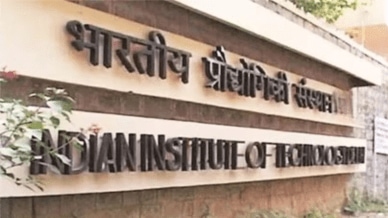Stay updated with the latest - Click here to follow us on Instagram
‘How the region’s hydrography shaped ancient trade and cultural interactions’: IIT Gandhinagar study finds direct connection between Lothal and Sabarmati River
The IIT Gandhinagar research supports the dockyard theory and addresses concerns about historical inlets, demonstrating Lothal’s importance for trade via river and sea routes

The Indian Institute of Technology Gandhinagar (IITGN) has found a direct link between Lothal and the former course of the River Sabarmati during a study.
The study, recently published in ScienceDirect, delves into the Lothal dockyard theory, employing technologies such as multi-sensor data, cloud computing, and advanced analytical platforms. The research on one of the most prominent Harappan sites reveals fresh insights into ‘how the region’s hydrography shaped ancient trade and cultural interactions’.
It uncovers that the lower reaches of the Sabarmati River underwent considerable migration during the late Holocene period, which influenced trade routes and settlement patterns. The research also highlights how ancient water dynamics impacted trade and cultural exchanges, offering new perspectives on the role of waterways in Harappan economies.
Moreover, the findings address previously-held doubts about the dockyard theory, providing robust evidence to support its validity.
“Multi-disciplinary investigations into archaeological landscapes can uncover many unknown facets,” says Prof V N Prabhakar, Associate Professor, Earth Sciences and Humanities and Social Sciences, IIT Gandhinagar.
He adds, “Remote sensing techniques in archaeology have significantly advanced, playing a crucial role in revealing ancient landscapes.”
Located around 30 km from the Gulf of Khambhat in Gujarat, Lothal was a crucial port during the Bronze Age Harappan period. This research revisits the dockyard theory from a landscape perspective, integrating data from early maps, satellite imagery, and Digital Elevation Models, say researchers.
The study area covers Lothal and surrounding regions in Gujarat, where over 140 palaeochannels have been identified, highlighting Lothal’s strategic position on a major river route for the Harappan civilisation. Satellite images have unveiled the old channels of the River Sabarmati, suggesting Lothal’s key location on a significant river route linked to Koth and other resource-rich areas on the one hand and Little Rann of Kachchh through the Nal Sarovar on the other.
The research supports the dockyard theory and addresses concerns about historical inlets, demonstrating Lothal’s importance for trade via river and sea routes. Another recent study by the authors also reveals an active inland water network connecting Lothal with other Harappan sites in Kachchh, thereby participating in distributing raw materials like agate-carnelian.
However, further studies are needed to confirm the timeline of the Sabarmati’s migration and the region’s tectonic dynamics.
“The reconstruction of palaeolandscape has the potential to offer a fresh perspective on existing archaeological and geomorphological theories, enabling discoveries and a deeper understanding of how ancient societies adapted to their environment,” says Prof Ekta Gupta who along with Prof Vikrant Gupta has contributed in conceptualisation, data curation, formal analysis, and investigation.